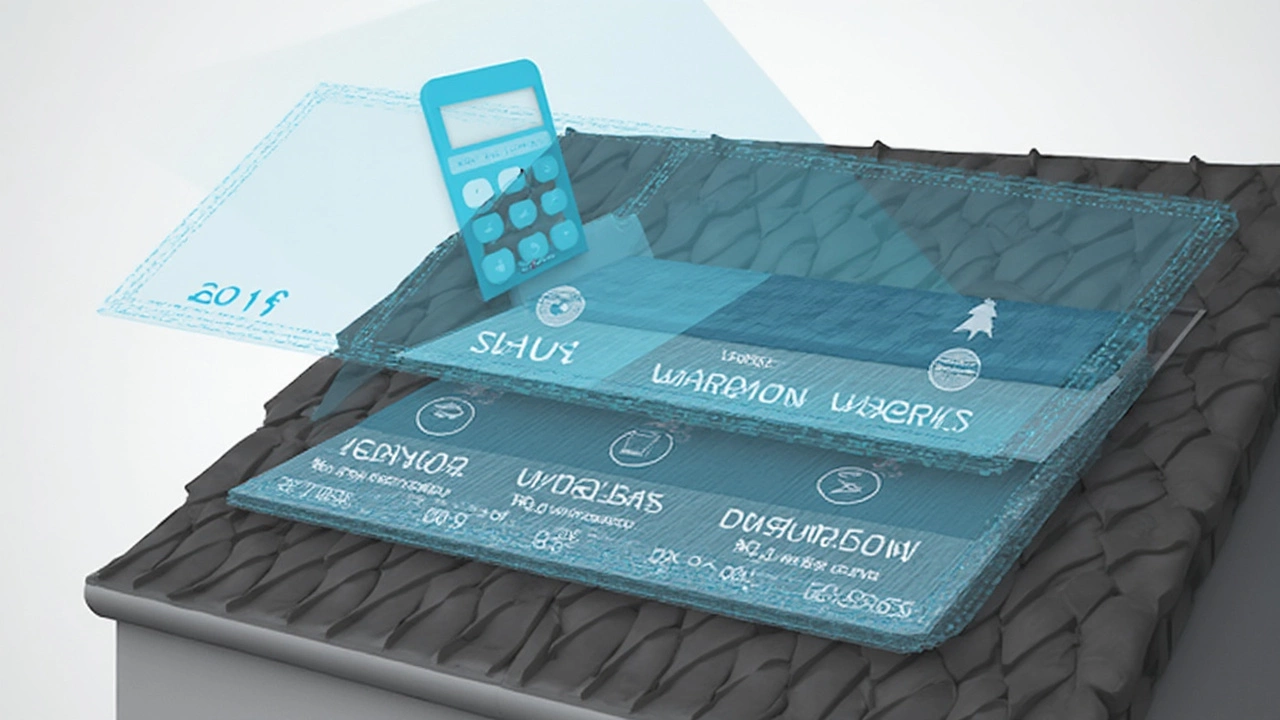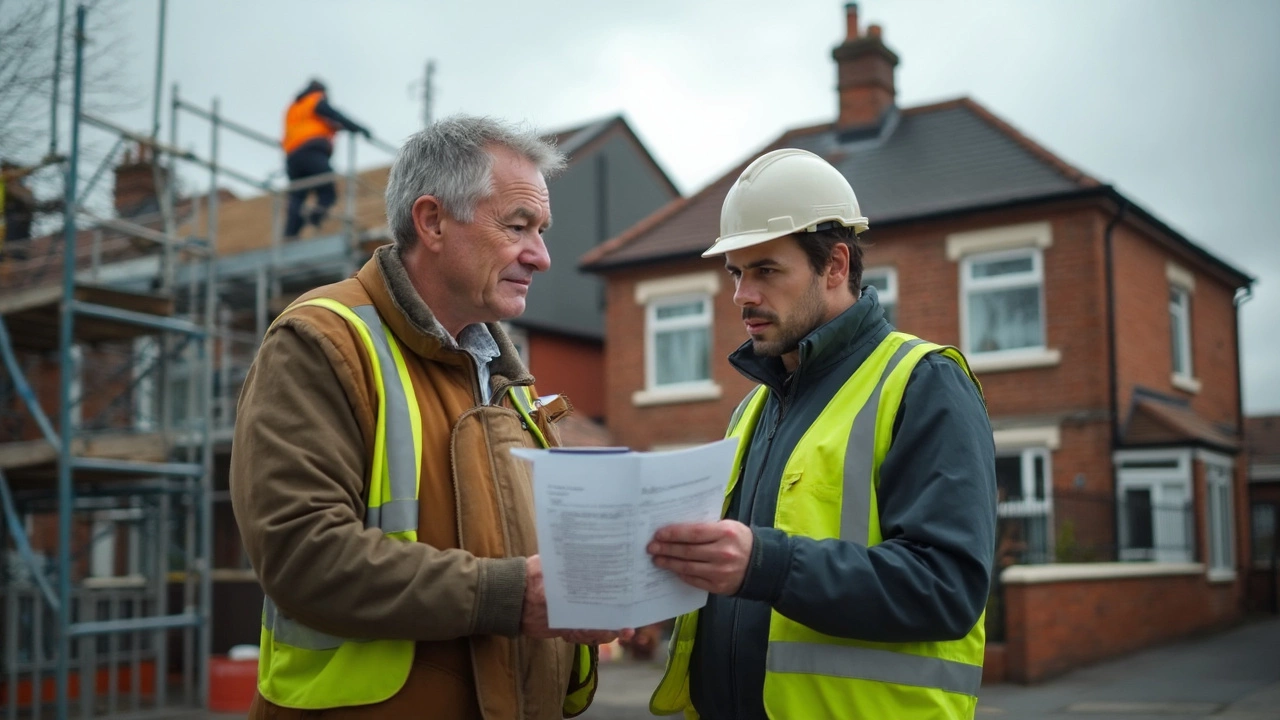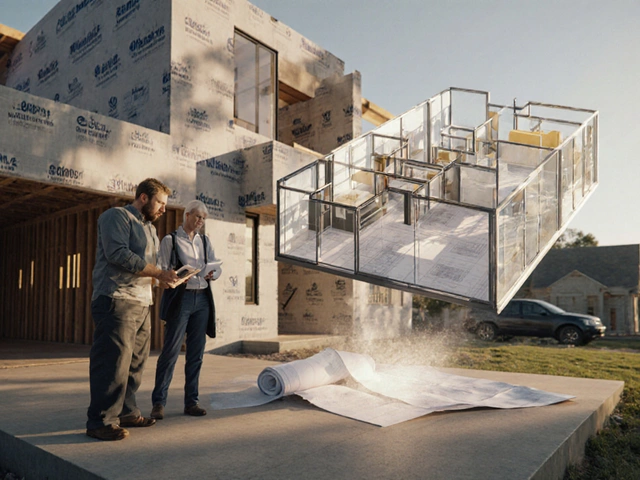Roof repairs and replacements have a way of emptying your wallet faster than you expect. Ever get a quote and feel like you need to sit down? You're not alone. Most folks don't realize just how much goes into a roofing job—it's not just shingles and nails.
There’s a lot happening behind the scenes that drives up the price. We’re talking specialized labor, insurance costs, strict safety rules, and materials that aren’t getting any cheaper. Each piece of the puzzle adds more to your bill.
If you’re staring at a quote wondering what in the world you’re really paying for, you’re in the right place. Once you know what pushes those numbers up, you can start making smarter choices on your next roofing project. Let’s pull back the curtain on where your money really goes when you hire someone for roof work.
- Sticker Shock: The Cost Breakdown
- Labor: More Than Just Muscle
- Materials and Their Price Tags
- Safety, Insurance, and Red Tape
- Unseen Challenges and Surprise Expenses
- How to Save Money on Roof Work
Sticker Shock: The Cost Breakdown
If you’ve ever felt blindsided by a high roofing estimate, you’re not alone. It almost always feels like too much. But once you see where every dollar goes, the price starts to make sense—even if it still stings.
Your roofing bill covers a lot more than someone tossing up new shingles. Here’s a quick breakdown of what’s packed into those numbers:
- Labor: Qualified roofers earn more than you might think, often between $22 and $40 per hour. It takes skill and a lot of muscle, especially for tough or steep roofs.
- Materials: Quality shingles, underlayment, flashing, and ventilation systems are pricey—and even the cheapest asphalt shingles keep climbing in price every year.
- Disposal Fees: Old materials have to go somewhere, and hauling all that mess to a landfill isn’t free.
- Permits and Inspections: You can’t just start tearing into a roof without playing by the city’s rules.
- Insurance: Roofers have some of the highest insurance costs of any contractor. Falls and accidents are real risks.
A real breakdown often looks like this:
| Cost Category | Percent of Total Bill |
|---|---|
| Labor | 35-50% |
| Materials | 30-40% |
| Disposal Fees | 5-10% |
| Permits/Inspections | 2-5% |
| Insurance/Overhead | 10-15% |
The biggest chunk of your roof work cost usually comes from labor and materials. And with supply prices still climbing—a bundle of basic asphalt shingles went up nearly 20% between 2021 and 2023—it adds up fast. Remember, a typical roof replacement in the U.S. runs between $8,000 and $16,000 for a single-family house, depending on size and materials. Seeing the numbers split out makes it a little easier to understand why it all costs so much.
Labor: More Than Just Muscle
When it comes to roof work, labor costs make up a big chunk of what you’re paying for. It’s not just about hauling materials up a ladder. Good roofing teams are highly trained, and a lot of states require roofers to have special certifications or licenses. Roofers often complete safety training for working at heights, and most legit contractors carry OSHA cards to prove it. These guys need to keep up with the latest installation techniques and building codes, which change every few years.
Roofing is also one of the riskiest construction jobs out there—not just because of the heights, but also because of the heavy lifting and hot tools. According to the U.S. Bureau of Labor Statistics, the roofing industry has one of the highest injury rates in construction. That’s why you’ll see roofers wearing harnesses, hard hats, and even special boots. Safety gear and insurance drive up their payroll, but they’re non-negotiable if you want professionals who do the job right.
Skilled labor isn’t cheap. It takes experience to spot hidden damage, lay materials correctly, and make sure there are no leaks or weak spots. A pro finishes the job faster and with fewer mistakes, which actually saves you money compared to hiring someone less experienced for a lower hourly rate.
- Most roofing contractors pay their crews a premium wage to attract and keep seasoned workers.
- Roofers work in all kinds of weather, from summer heat to chilly early mornings, and that grind deserves fair pay.
- The best roofers stand by their work, so you’re paying for quality, not just for someone to get the job done fast.
The next time you look at a roofing estimate and see that labor line eating up the budget, remember: you’re not just paying for muscle. You’re paying for skill, safety, and the peace of mind that comes with having the job done right. That’s a big part of why roof work is expensive.
Materials and Their Price Tags
When people look at a roofing bill, they often think the contractor is making a huge profit. The truth? Much of what you pay goes straight into roof work materials, and these prices can be pretty wild. Asphalt shingles, for example, are the usual pick in the US and cost anywhere from $120 to $180 per square (that’s roofer-speak for 100 square feet). Want something more durable, like metal or clay tiles? Get ready to spend two to seven times more. Metal roofing can reach $1,000 per square, while slate or high-end tile can blow past $2,000.
Supply chain problems and natural disasters can push these numbers even higher overnight. According to the National Roofing Contractors Association, "Prices for basic roofing materials jumped 20% between 2020 and 2023, and specialty products increased even more."
"Homeowners are often shocked by how much material costs have climbed. It’s not just inflation—shipping, shortages, and even tariffs play a big role." — Roofing Alliance Industry Survey, 2023
The table below shows typical material costs per square (100 sq ft):
| Material | Low End ($) | High End ($) |
|---|---|---|
| Asphalt Shingles | 120 | 180 |
| Metal Roofing | 650 | 1,000+ |
| Clay Tile | 700 | 1,200+ |
| Slate | 1,000 | 2,500+ |
And that’s just for the actual roofing material—no underlayments, flashing, vents, or fasteners. Roofers also have to worry about waste. They usually order 10-15% extra to cover odd roof shapes, cuts, and errors. It all adds to your final bill.
Here are some things that can make your materials cost more:
- Roof pitch and slope: Steep or complicated roofs need special materials or extra pieces for safety.
- Color and finish: Odd colors or special coatings will bump the price.
- Local code requirements: Some areas force you to buy more expensive, impact-resistant or fire-rated shingles.
If you want to save money, stick to the basics and avoid custom colors and imported tiles. And always ask your roofer for leftover material—sometimes, they’ll hand it over, which can be handy for future repairs.

Safety, Insurance, and Red Tape
Safety is a big reason roof work isn’t cheap. Working up high isn’t just scary—falls are one of the leading causes of injury in construction. Roofers have to wear harnesses, secure ladders, and use special equipment, all of which cost money to buy and maintain. Companies also spend time and cash on safety training so nobody gets hurt. Those costs end up on your bill.
Then there’s insurance. Roofers need liability insurance and workers’ comp, and you wouldn’t want to hire someone who skips it. If there’s an accident and your contractor isn’t insured, you could get stuck with a lawsuit. That’s not a risk worth taking, especially since a single roofing injury claim can run into six figures. Every legit roofing crew builds insurance into their rates, plain and simple.
Red tape is the last piece nobody likes to talk about. Most towns and cities demand permits for major roof work. Getting permits means more paperwork, fees, and sometimes inspections during and after the job. If you skip permits, you could have trouble selling your house or even face fines. Plus, some areas require roofers to keep up with certifications or licenses, adding more hoops they have to jump through just to work legally.
All these things exist to protect you as the homeowner—but they do make the final bill bigger. Next time you see a professional crew suited up with gear and paperwork in hand, know those details are part of what you’re paying for. If someone’s estimate seems way lower than everyone else’s, double-check if they’re skipping safety steps, insurance, or permits. Saving money isn’t worth the headache of legal and safety problems down the line.
Unseen Challenges and Surprise Expenses
Here’s where roof projects get tricky. Once a crew starts, surprises come out of nowhere. Roofers might pull up old shingles and discover rotted wood or water damage no one saw during the first inspection. Suddenly, the project jumps in time and budget. Even a small leak hidden under layers can wreck the plywood underneath, and that means ripping out sections you thought were fine.
Another biggie is outdated or damaged flashing around chimneys, skylights, or vent pipes. If these metal strips are shot, water can sneak inside—even if your shingles look perfect. Replacing or repairing flashing takes extra skill, materials, and hours, which ups your costs.
Some homes break the budget because of design headaches—steep slopes, tricky roof angles, or lots of dormers slow the crew down and need special setups. Hard-to-reach roofs often need extra safety gear or ladder work. And if your roof wasn’t built to today’s ventilation code, the crew has to add vents or insulation, or risk your brand-new roof failing too early.
- Plywood rot, mold, or termites often aren’t found until the roof is open
- Flashing, decking, and underlayment repairs are hard to spot up front
- Steep or multiple-story roofs need extra safety time and equipment
- Older homes can throw curveballs with outdated framing or materials that need updating
Don’t forget dumpster fees, permit costs, or unexpected bad weather. If it rains in the middle of the job, you’re paying the crew to cover and protect the area until it’s dry again.
The bottom line: even the best roofers can’t predict every single problem, but they’ll often leave some wiggle room in their numbers for those wild cards. If your roof work estimate seems high, ask the roofer how they handle these surprise costs—and always read the fine print to avoid nasty shocks when the bill comes in.
How to Save Money on Roof Work
If you’re stressing about your next roofing bill, you’re not stuck. You can bring that number down without cutting corners where it matters. Here’s what actually works.
- Shop Around for Quotes: Never settle for the first offer. Get at least three written quotes from local roofers. Sometimes the price difference is hundreds or even thousands. Compare what’s included: some might skip debris removal or certain underlays just to look cheaper.
- Time the Project Right: Fall and late winter tend to be slower for roofing companies. Contractors may offer better deals during these off-peak seasons since they want to keep their crews busy.
- Use Insurance When Possible: If your roof has storm or hail damage, check if your homeowner’s insurance covers it. Don’t just assume it won’t—call your agent and ask. Insurance can save you a big chunk if the damage is legit.
- Choose Materials Wisely: Some materials cost way more, but don’t always last longer for your region. For instance, architectural shingles are pricier than three-tab, but in some climates, their lifespan is pretty close. Ask your roofer what fits your house and your budget.
- Bundle Repairs: Fixing small stuff when you’re doing a big job, like replacing flashing or vents, usually costs less than tackling it later as a separate job. Tack on those extras now instead of calling them back later.
- Consider Partial Replacement: If only one section is rough, some roofers will do repairs and blend them in. Full replacements are sometimes overkill, especially if most of your roof is still solid.
Here’s a quick look at some average savings based on real choices homeowners made in the last two years:
| Tip | Estimated Savings |
|---|---|
| Getting 3+ quotes instead of 1 | $1,500 – $3,000 |
| Scheduling during off-peak months | 5-15% off total bill |
| Using insurance for covered repairs | Up to 90% of repair costs |
| Choosing standard instead of premium shingles | $2,000 – $4,000 |
| Bundling minor repairs | $250 – $800 |
Avoid trying to DIY major work if you're not trained. People often end up paying more when a pro has to redo a botched job—or worse, they get injured. Focus on picking the right pro and smart timing, and you’ll get the best deal on your roof work without risking your home or your safety.








